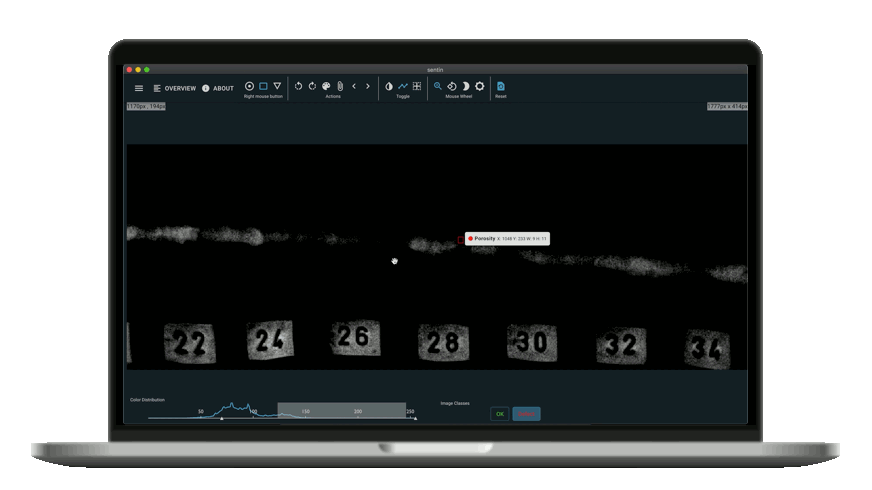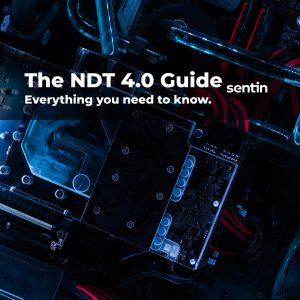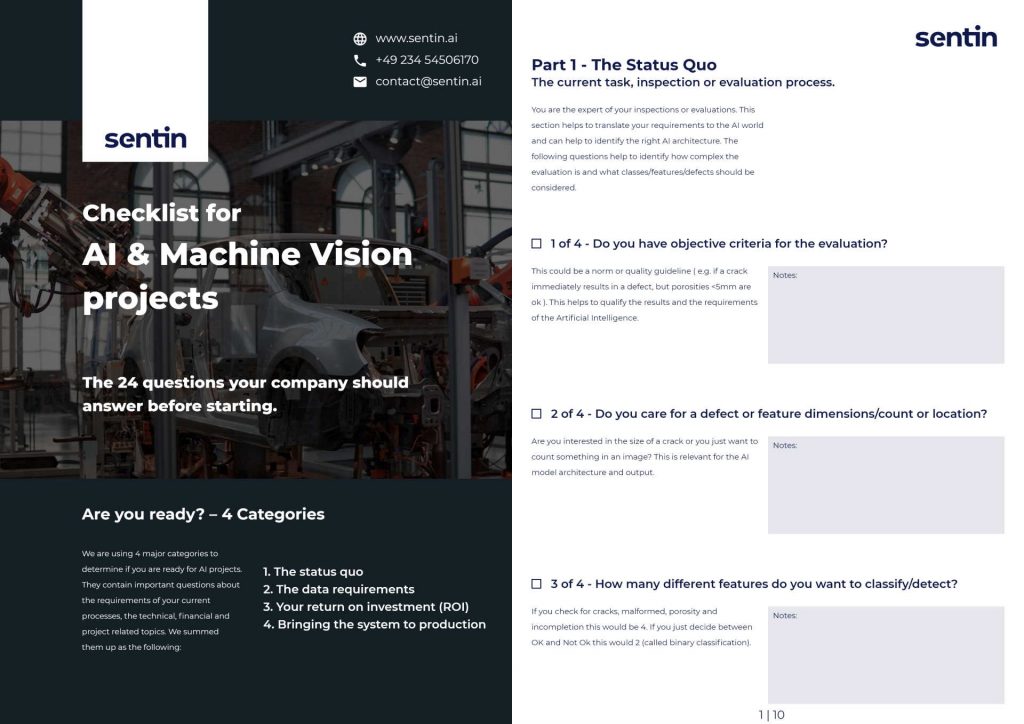Why is NDT/NDE important?
Regular inspection of mechanical and automated systems such as power plants and pipelines as well as machine parts and vessels (such as airplanes) is crucial. It is not only necessary for compliance’s sake, but to prevent breakdowns which could lead to environmental pollution and huge losses in terms of money and lives. However, to achieve the intended purpose, the inspection should be carried out without damaging the inspected parts. This is what non-destructive testing (NDT) or nondestructive evaluation (NDE) is all about [2]. NDT or NDE is an examination of the quality and structure of machine parts, pipelines, power plants or airplanes without causing damage on the inspected parts.
Table of Contents
The inspectors use inspection methods such as, ultrasonic testing, penetrant testing, visual testing or radiographic testing, based on their experience and certification, to classify imperfections of a machine part as defect or acceptable. Besides, they follow qualified norms and standards for the classification. Although NDE is performed by certified inspectors, the process may be very subjective and prone to errors [1]. The human interpretation of these defects on images or the part itself is hard even for experienced inspectors. As such, human factors have a part to play in the reliability of NDT.
Learn More:
Human factors affecting NDT Reliability
The quality of NDE process highly depends on the person conducting the inspection. Researchers have managed to identify various inter-personal predispositions that affect NDE performance quality [3].
These factors include:
- conscientiousness
- extraversion and introversion
- memory and perception
- attentiveness
- attitude and motivation
- fatigue
Conscientiousness
Conscientiousness refers to a person’s level of desire to perform a task diligently and thoroughly. Numerous empirical studies show that NDT inspectors with high conscientiousness scores are more keen and through while conducting the examination as compared to those rating low on the personality trait. As such, a high conscientiousness level in an NDT inspector leads to higher inspection performance and reliability.

Extraversion and introversion
NDE inspection is a task that requires a high level of attentiveness. As such, it is important to consider personality factors that affect the attentiveness of a person while performing a task. In this light, researchers have linked inspectors’ introversion and extraversion differences to the performance of NDT, among other vigilance tasks. According to studies, extraverts can be distracted more easily than introverts while performing inspection tasks. inspectors who are introverted are usually able to maintain the level of attentiveness that the assessment requires. On the other hand, extroverts struggle to achieve and maintain that level.
Memory and perception
Memory and perception form an integral part in NDE activity performance, especially where manual inspection is involved. For instance, an inspector needs to remember various crack shapes and types from their past work experiences or training. This involves both long term as well working memory processes. Therefore, the conclusion that the assessment expert makes is dependent on their perception and processing of information as well as memory capability. As such, the inspector’s memory and perception problems could lead to incorrect identification and interpretation of mechanical discontinuities, possibly rendering the whole or part of the evaluation process futile.
Attentiveness
The attentional resources of an NDT inspector are crucial for the accuracy of the testing process. However, the level of the resources reduce as the inspector immerses their mind into the work. Eventually, when these resources get fully depleted, the inspector’s attention reaches the capacity limit. At that point, the inspector may fail to interpret some of faults/discontinuities properly. This particularly happens in dual-task performance because they require split attention, which is difficult for a human to maintain for a long period. However, the ability to perform such interpretations accurately varies from one inspection expert to another since the attentional resource capacity also differs from person to person.

Attitude and Motivation
The empirical findings show that the attitude and motivation levels of an NDE expert have a significant influence on the performance of the testing process and the interpretation of its findings. According to a series of studies that were conducted by the Swedish Nuclear Power Inspectorate, an inspector’s attitude and external motivation and among the key factors that affect their performance in NDT as well as the reliability of the testing process, including the judgement that inspectors make.
Fatigue
Fatigue, especially mental fatigue, has a negative impact on the performance of vigilance tasks. Eventually, the researchers found out that working for long hours in an NDT task might cause fatigue in an inspector and this can negatively affect their visual acuity ability [4]. They often see things that may not be there or ask a colleague to help them in the interpretation of what they see because their minds are too fatigued to process the information accurately. This creates more room for errors which can have a negative impact on the reliability of the inspector’s judgement and suggestions.
How can evaluation be performed digitally?
We are helping companies, organizations and individual inspectors carry out nondestructive tests on their machine parts, pipelines, power plants and airplanes, among other crucial mechanical systems, units and parts accurately. The sentin EXPLORER simplifies the evaluation of images by automatically analyzing and marking imperfections and improving the image quality.
References
[1] Müller, C., Holstein, R., & Bertovic, M. (2014). Conclusions of the 5th European American workshop on reliability of NDE. Materials Testing, 56(7-8), 599-601
[2] Müller, C., Bertovic, M., Kanzler, D., Heckel, T., Rosenthal, M., Holstein, R., . . . Pitkänen, J. (2014). Assessment of the reliability of NDE: A novel insight on influencing factors on POD and human factors in an organizational context.
[3] McGrath, B., & Carter, L. (2013). Improving inspection reliability through operator selection and training. Paper presented at the 5th European-American workshop on reliability of NDE Proceedings, Germany.
[4] Luk, B. L., & Chan, A. H. S. (2008). Human factors and ergonomics for nondestructive testing. In A. H. S. Chan & S.-I. Ao (Eds.), Advances in industrial engineering and operations research (pp. 127-142). United States: Springer.
[5] Krishnamoorthy, K., Eng, P., & Energy, A. (2009). Quality assurance in NDT. NDT in Canada.






